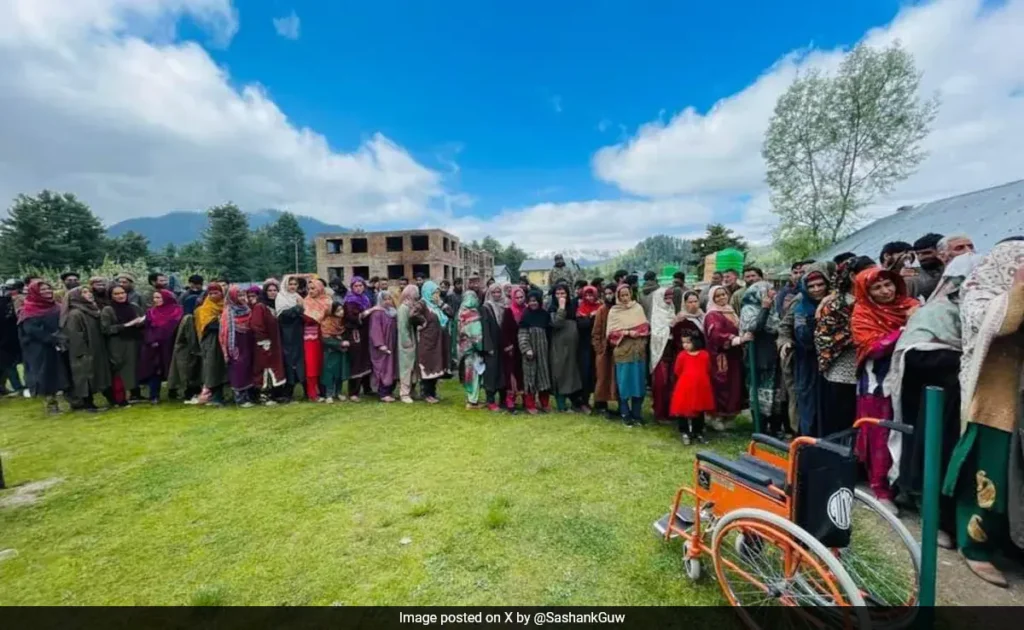“Srinagar Witnesses Highest Voter Turnout in Decades: Largest Participation Since 1998”

The recent polling in the Srinagar Lok Sabha constituency marked a significant milestone, with a voter turnout of 36%, the highest since 1998. This surge in participation is particularly noteworthy given the historical context of the region, which has grappled with insurgency and political upheaval for decades. The election marked a crucial moment as it was the first major electoral exercise in the Valley since the abrogation of Article 370, which revoked the region’s special status and altered its political landscape.
Analysts credited the improved voter turnout to a more favorable overall environment, reflecting a growing sense of stability and confidence among the populace. This is especially remarkable considering that the region has been without an elected government since 2018. Over the years, the voter turnout in Srinagar had been dwindling, reaching alarming lows in previous elections. For instance, the turnout was a mere 14.4% in the 2019 Lok Sabha elections and 7.1% in the 2017 by-poll.
Officials noted a significant increase in turnout even in urban areas, traditionally strongholds of separatist sentiments, where boycott calls had previously resonated strongly. Notably, there were no such boycott calls this time, as elections were seen as an assertion of the region’s integration with the Indian Union. Despite allegations of police harassment and slow voting from some quarters, no untoward incidents were reported from any of the 2,135 polling stations across the constituency.

The election saw 23 candidates vying for the seat, with prominent contenders from parties like the PDP and NC. Voters expressed a range of motivations for participating, from a desire for peace and prosperity to a push for change and a voice against perceived repression. Many voters, including those who had previously abstained, emphasized the importance of their votes in shaping the region’s future and addressing longstanding issues such as insecurity, instability, and inflation.
In areas like Ganderbal, where voter turnout was nearly 50%, residents hailed the increased participation as a positive sign of changing attitudes and aspirations. There was a palpable sense of optimism among voters, who saw the election as an opportunity to usher in much-needed change and break free from the constraints of the past. Overall, the higher turnout reflects a growing momentum for democratic engagement and a renewed hope for a brighter future in the region.
Also Read | https://www.newsleakcentre.com/delhi-hospitals-on-high-alert-following-bomb-threat-calls-amid-school-scare/
Author:- Apoorva Arora
